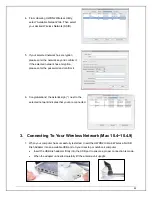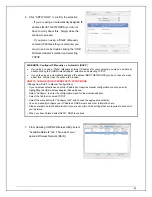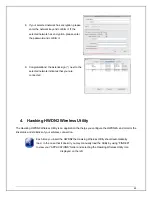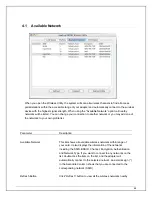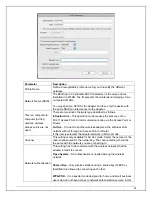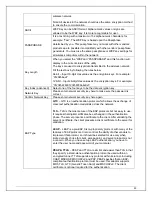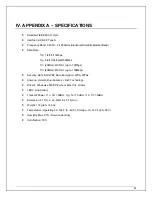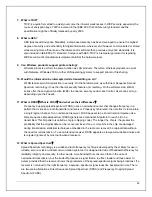
56
7. What is TKIP?
TKIP is a quick-fix method to quickly overcome the inherent weaknesses in WEP security, especially the
reuse of encryption keys. TKIP is involved in the IEEE 802.11i WLAN security standard, and the
specification might be officially released by early 2003.
8. What
is
AES?
AES (Advanced Encryption Standard), a chip-based security, has been developed to ensure the highest
degree of security and authenticity for digital information, wherever and however communicated or stored,
while making more efficient use of hardware and/or software than previous encryption standards. It is
also included in IEEE 802.11i standard. Compare with AES, TKIP is a temporary protocol for replacing
WEP security until manufacturers implement AES at the hardware level.
9. Can Wireless products support printer sharing?
Wireless products perform the same function as LAN products. Therefore, Wireless products can work
with Netware, Windows 2000, or other LAN operating systems to support printer or file sharing.
10. Would the information be intercepted while transmitting on air?
WLAN features two-fold protection in security. On the hardware side, as with Direct Sequence Spread
Spectrum technology, it has the inherent security feature of scrambling. On the software side, WLAN
series offer the encryption function (WEP) to enhance security and Access Control. Users can set it up
depending upon their needs.
11. What is DSSS
?
What is FHSS
?
And what are their differences
?
Frequency-hopping spread-spectrum (FHSS) uses a narrowband carrier that changes frequency in a
pattern that is known to both transmitter and receiver. Properly synchronized, the net effect is to maintain
a single logical channel. To an unintended receiver, FHSS appears to be short-duration impulse noise.
Direct-sequence spread-spectrum (DSSS) generates a redundant bit pattern for each bit to be
transmitted. This bit pattern is called a chip (or chipping code). The longer the chip is, the greater the
probability that the original data can be recovered. Even if one or more bits in the chip are damaged
during transmission, statistical techniques embedded in the radio can recover the original data without-
the need for retransmission. To an unintended receiver, DSSS appears as low power wideband noise and
is rejected (ignored) by most narrowband receivers.
12. What is Spread Spectrum
?
Spread Spectrum technology is a wideband radio frequency technique developed by the military for use in
reliable, secure, mission-critical communication systems. It is designed to trade off bandwidth efficiency for
reliability, integrity, and security. In other words, more bandwidth is consumed than in the case of
narrowband transmission, but the trade off produces a signal that is, in effect, louder and thus easier to
detect, provided that the receiver knows the parameters of the spread-spectrum signal being broadcast. If a
receiver is not tuned to the right frequency, a spread –spectrum signal looks like background noise. There
are two main alternatives, Direct Sequence Spread Spectrum (DSSS) and Frequency Hopping Spread
Spectrum (FHSS).
Summary of Contents for Hi-Gain
Page 1: ......
Page 10: ...10 f Congratulations you are now successfully connected ...

